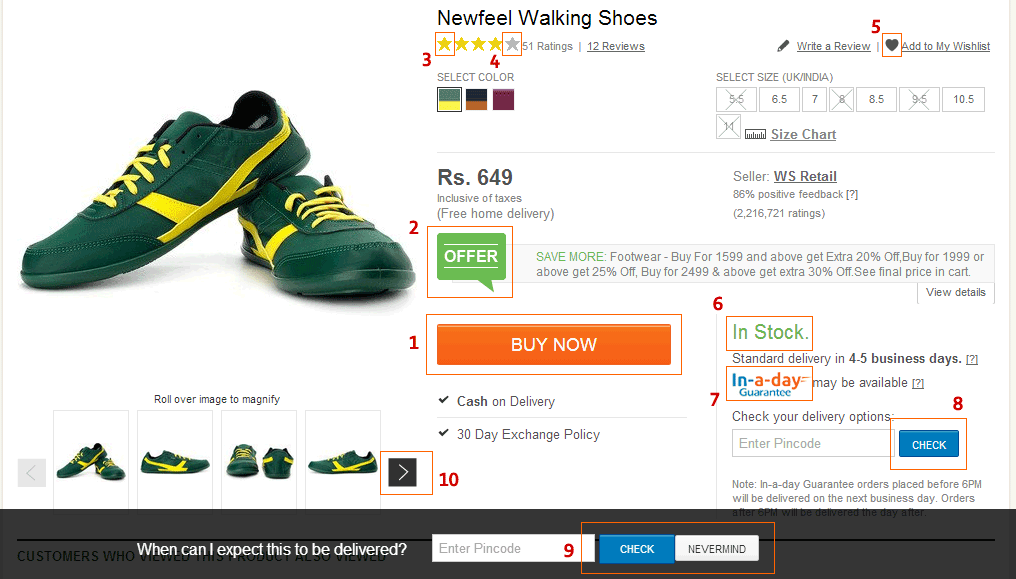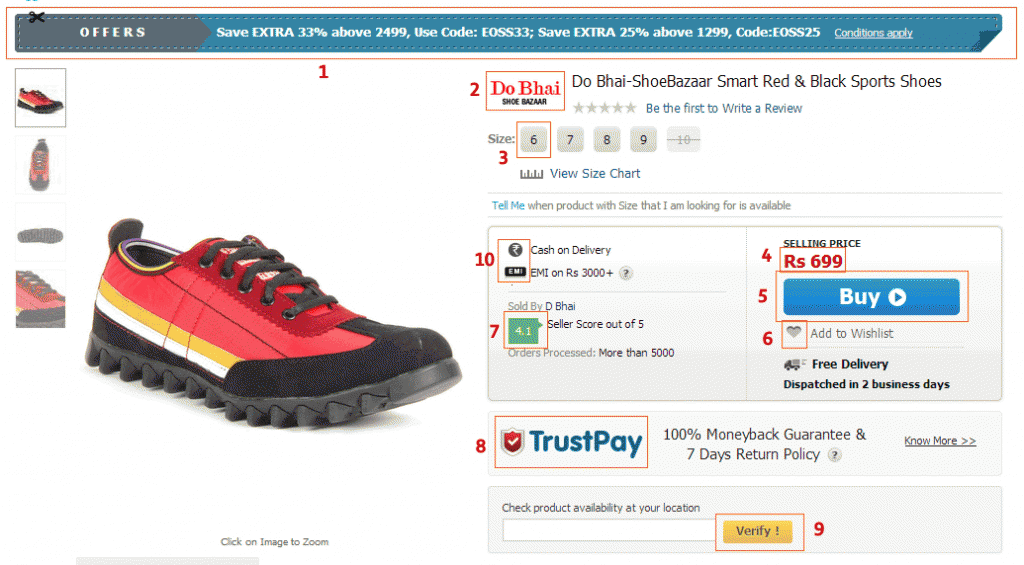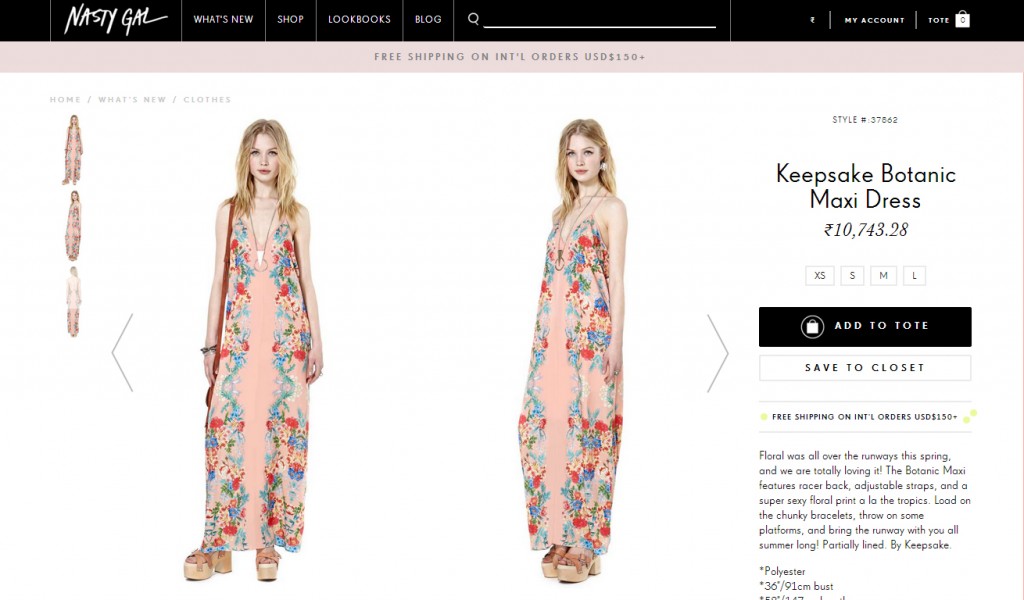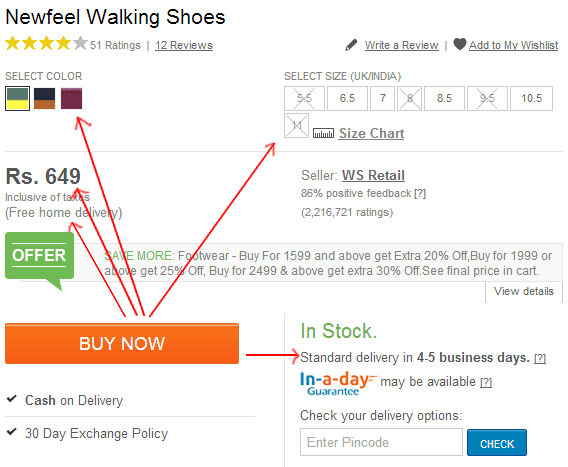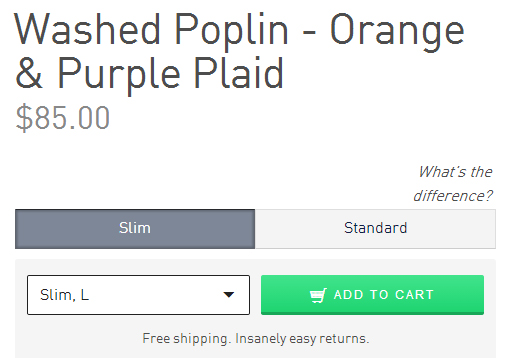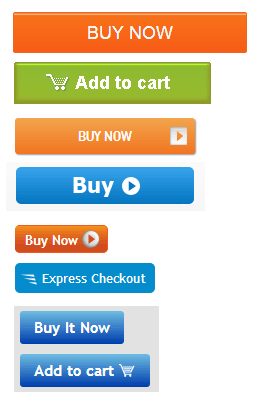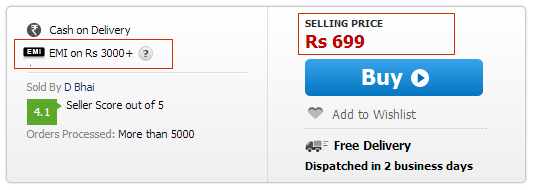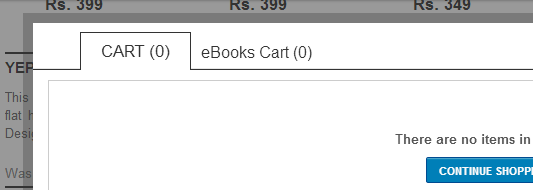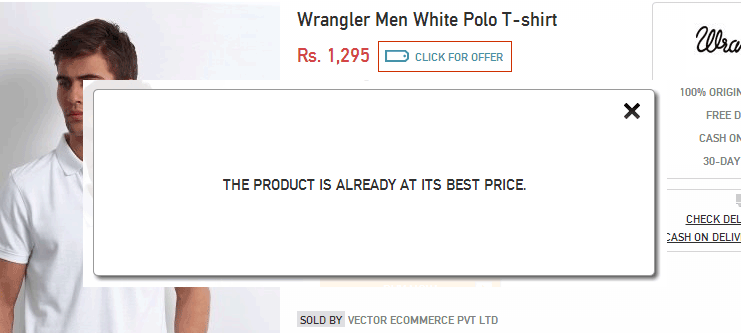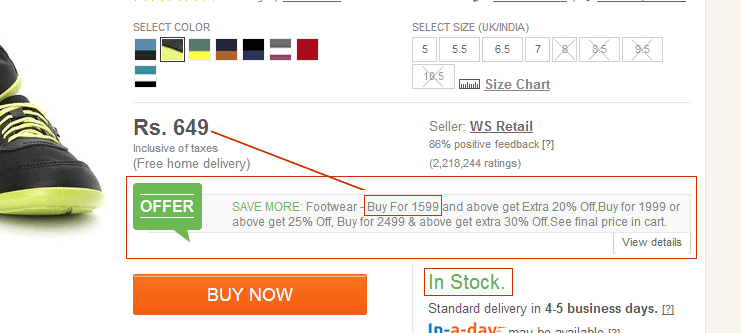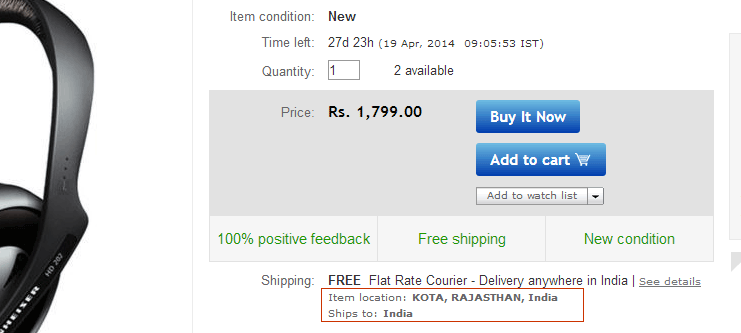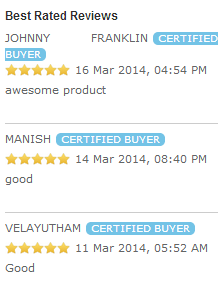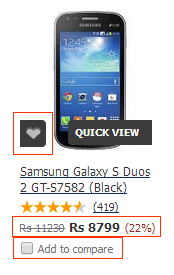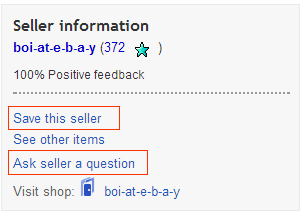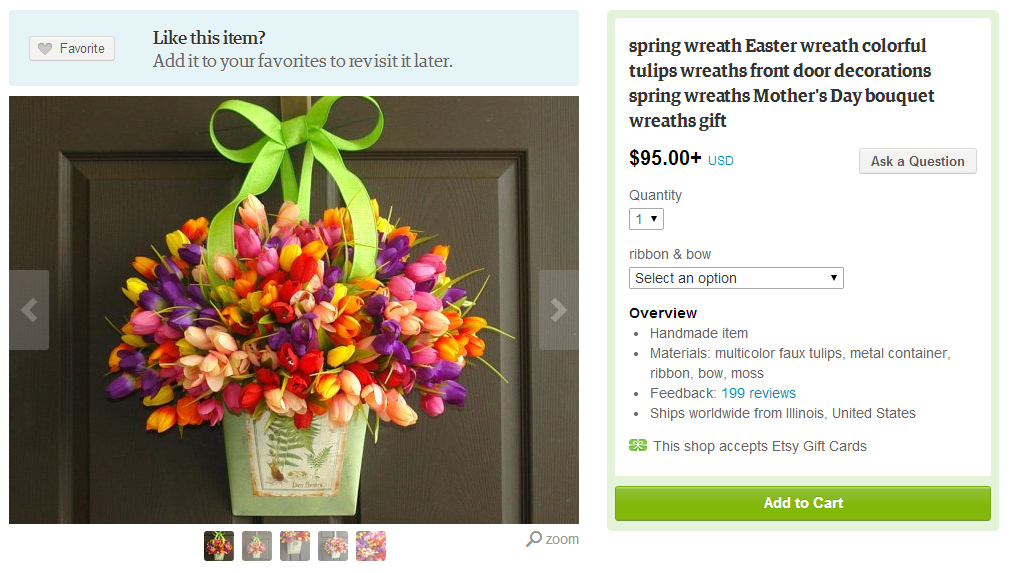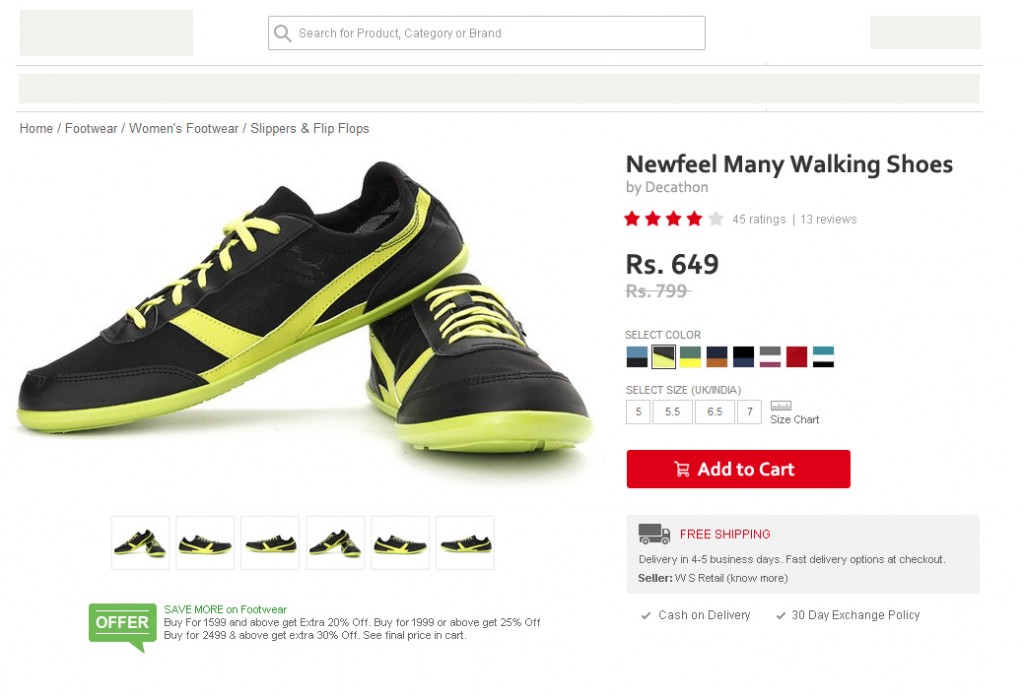This post is a update to one of my earlier post written about a year ago on similar lines.
Multiple new products, investments and its always a good thing for the ecosystem which matures with time. Indian tech industry is changing at a rapid pace, its only fair to go back and recheck those predictions and ensure to keep it up with the times.
Meanwhile, predictions that came true:
- Had indicated the possibility of this particular VCs (without naming specifically, though evident who) investing actively in Indian Ecommerce merging its portfolio companies to form an large entity. Just few days over a year after this prediction, Accel and Tiger Global backed Flipkart acquired Letsbuy.
- Mentioned that a large player will enter Group Buying deal space. The coupon/deal space was too tempting for many to resist at that time and as I expected, Times Group (Indiatimes) entered this space in May 2011.
- Specifically mentioned of Pubmatic being acquired; There were rumors about a possible acquisition offer by Amazon for $300 Mn which was declined as the company chose an IPO over acquisition. Meanwhile Google acquired AdMeld for $400 Mn.
- Hinted towards AdMax Network in South East Asia which leverages local inventory and is a leader in these countries. While I expected something like this to happen in India, interestingly Komli acquired AdMax. (Though I did not predict this to happen).
Predictions for 2012 onwards:
Product based Ecommerce companies:
Flipkart, HomeShop18, Infibeam will continue to grow; and (no brainer now) that Flipkart will emerge as the market leader amongst the Indian players. I expect Flipkart and these leaders to attempt the following –
- To ensure profitability of logistic operations, either introduce upfront minimum charge for Cash on Delivery below a certain price value or markup its prices by a small amount.
- Introduce a co-branded credit card with rewards. Not as a branding or marketing exercise, but to encourage existing users to move towards pre-paid payment mechanisms.
- Spin-off its logistics, customer care, operations departments in to a different company to ensure profitability of Flipkart before it hits an IPO.
Though many criticize the Samwer brothers (Rocket Internet) for creating copies of successful business models – I see nothing wrong in that. How different are any of the other ecommerce sites with their Amazon.com ambitions? Rocket Internet fellas are aggressive risk-takers, investors and amongst their bets on Indian market, Jabong.com has potential to enter in the top 3 / top 5 spots. At some point of time – they may consolidate Fabfurnish.com and HeavenandHome.com into Jabong and set a stage for IPO or an exit through acquisition (Amazon.com?). Rocket Internet is as smart as any other investor when it comes to getting acquired. Watch them!
Marketplace models like Ebay, Indiatimes, etc may face tough competition owing to their helplessness to control key factors like logistics, operations and product quality; precisely what funded startups are keen to build on.
There are now niche plays coming up – Ecommerce services for Tier II/III towns. Most likely candidates to struggle, conceptually sounds great – but the on-ground reality is much different. Will they not accept user orders if customer is from Mumbai or Delhi? I know you talk about ambitions of Tier III youth, age bracket 20-35, etc – but do they require iPad? if yes – why will not Flipkart serve it.
About Amazon’s India plans – I mentioned of the same in this post about about Junglee.
.
Vertical Ecommerce and More –
Many ventures who have raised between $2Mn to $5Mn – are yet to move beyond the 500 transactions per day mark even after a year. Few yet to cross 200; scalability is must for any Ecommerce venture to succeed. Verticalization of ecommerce has happened before time.
Predict more consolidation in Ecommerce industry in vertical investments. Simply for the following reasons –
- There will be a Series B crunch. Most investors have already made multiple investments in ecommerce services. Companies will face tough time raising further investments and will require to raise Series B investments from existing investors. Investors hedge risk by investments in multiple ventures, they will require deep pockets to put more money in one venture, diluting founders more and eventually controlling the company. This shall lead to multiple consolidations between portfolio companies (Flipkart + Letsbuy scenarios).
- There are multiple vertical funded ecommerce companies in market today. This has happened before time, for verticals to succeed, the horizontal ecommerce play itself should be very large. This is exactly why ventures like Flipkart (books), Letsbuy (gadgets), Snapdeal (coupons) who started as niche expanded into horizontal play.
Few players who have launched multiple sites for focused ecommerce approach, other than doubling costs of user acquisition, the only notional benefit it brings to table is SEO. This might not be even proved in Indian context – though a different vertical, we see that Shaadi.com with single brand focus is as popular as Bharat Matrimony with its multiple brands.
Another trend in Ecommerce is online grocery shops – at this stage most of the ventures are focused in single cities, the challenge for every startup in this domain is to replicate this operations in every city, every locality they expand into in a same or much more efficient manner. Unaware of any investments made in this vertical yet; I’m guessing investors are also looking at same – scaling beyond 2 to 3 locations.
Ecommerce for kids – someone shared a joke with me ‘Probably the rate at which online baby stores are coming up is greater than growth rate of India’s population.’ Very little differentiation between existing players, some of them already moving towards a franchise model (which probably beats the economics of online stores).
Amongst vertical investments – many have happened till date in Fashion. This is an interesting space, however already crowded with no differentiation left. Increased cost of user acquisitions, operations and logistics along with Series B or follow-on investment crunch will take a toll on few players. Funded players will try many things – new brands, labels, etc. The question always will be – what differentiation to bring to table? what exit for investor?
There is also a serious talent crunch with many funded ecommerce players, not just at junior but at middle and senior management levels. Another trend that will come up soon is acquihire deals.
Trend you will notice soon – the last slide of pitches will now read acquisition by Flipkart, instead of Amazon. But in an early ecommerce market acquisitions of competition really makes no sense – will write about this some day.
.
Group Buying / Daily Deal / Coupon Companies:
Post the Groupon IPO, the obvious was out – this is not a profitable business to be in. Even the leaders moved away from the Group Buying space – tells us the story of Group Buying or Daily Deals. Has suggested last year that funded players will grow, they did but by pivoting to product driven horizontal ecommerce.
The Groupon IPO spoiled the party for many others who were waiting to be acquired by Google Offers or Living Social. Amazon is know to build large profitable businesses, though Living Social has raised a massive $800 Mn+ in investments till date – its fate might be uncertain. Either hit the dead pool or an acquisition by Groupon itself at a very cheap price!
Back to India, there is nothing much left to say now for this vertical, its just a matter of time when large me too companies who joined the party will start calling it quits. Ebay who experimented with it silently abandoned its play, others like Times, Rediff, Mouthshut will too have to review their presence in this vertical in some time.
Some significant players who made presence felt in the couponing space are – online recharge players like FreeCharge & PayTM. It is too early to comment on their exit, however its a interesting vertical (specific only to India) to watch for following reasons – operators doing something fundamentally wrong as own customers pay bills outside, multiple players have entered the segment, players need to retain consumer interest without causing deal fatigue.
.
Online Travel Companies:
Not much changing in travel landscape. As mentioned last year – Yatra & Cleartrip are clear IPO exits. Last year MakeMyTrip and SAIF acquired Ixigo, Yatra & Cleartrip might as well look at smaller acquisitions in this space, particularly players in holidays/vacations – the likes of mygola.
It has been a while that Naspers/MIH has invested in ibibo; with ibibo.com focusing only on games from now, it might look at some kind of exit with Goibibo.com. Meanwhile, Naspers / MIH / Ibibo might look at acquiring one or two startups either in gaming/travel domain to solidify these two verticals, or to expand in to new verticals since they clearly indicate focused growth now with Gaming (Ibibo), Travel (GoIbibo), Ecommerce (Tradus) & Automobiles (Gaadi).
RedBus.in is the clear leader in online bus ticketing space, it will continue to be IPO candidate or hot acquisition target. Owing to high valuation of RedBus, its now noteworthy competitor TravelYaari will be in better position to be acquired – in all probability by Yatra / Cleartrip or GoIbibo.
Repeat – Dear Railway Ministry, please list IRCTC on stock markets. Massive opportunity.
.
Online Car Rentals:
Just two years back we saw host of daily deal sites, in last month we have seen about 4 investments made in Online Car Rentals space – Ola Cabs, Savaari, YourCabs and TaxiGuide. Predict Ola Cabs to take a lead in this space – and be a possible acquisition candidate for Uber.
This prediction is not based on the fact that they have raised highest of the lot – because its strategy is right. To be successful in this space, they need to concentrate only on the top 8-12 metros, 90% of their target customer base is in these cities. A smart online car rental service will start only in cities where fleet cabs like – Meru Cabs, Easy Cabs or others have significant presence and created the market. For now, more cities just looks good on paper.
Time will prove this right or wrong – as for now, this vertical has just started showing signs of growth (and already getting crowded). It kind of makes sense for Ola Cabs to make a small acquisition in this space and expand quickly.
.
Advertising Networks – Web / Mobile:
Last year I suggested that this particular vertical is hinting saturation of market. Out of the existing lot (Tyroo, Komli, Ozone Media, AdMagnet, and other players) – clearly Komli has grown out of India and with its series of acquisitions (Aktiv, ZestAds, AdMax) is trying to position itself as large digital advertising company in Asia, indicating its preparation for an IPO or could be acquired by large agencies like WPP, Dentsu, Publicis or similar.
Unfortunately for India, there is not much technology play in advertising networks, most end up working in model similar to agencies (except the creative part). But few niche technology players in this domain are Sokrati (Paid Search) and Vizury (Display Re-targeting). Both have raised smaller investment rounds earlier and could be good acquisition targets; unlikely for Komli for its partnership with Efficient Frontiers (for search) and display re-targeting has been mastered by many now. Of all players, Ohana Media* could be a acquisition target – its behavioral marketing techniques that combine audience data across channels is amongst the best differential technology available in India today.
Tyroo recently acquired DGM India for $0.6 Mn. DGM was India’s largest affiliate marketing company – a small acquisition size may play spoil sport for couple of startups wanting to monetize through shopping / affiliate related models and currently looking to raise funds.
InMobi continues to be the hot IPO candidate in this space. Google acquired AdMob when advertising on mobile web was at its peak time; current mobile advertising focus is shifting towards in-app advertising, which might even make it a acquisition target for Google (Android) or Apple (iOS devices). New players like Vserv or others would have to build a product sweet sport – number of publishers, impressions available per day and so on, very early days for them.
Guruji seems to now have completely focused its efforts on AdIquity – its mobile advt yield optimization and mobile RTB platform (similar to Pubmatic, but for mobile). Good strategy, may provide exit for its investors by a quick acquisition by InMobi or even by Pubmatic or other web based RTB players like Rubicon Project). As Google continues to mess up its core product – search, it is high time Guruji re-look its search business, not for India but for the world (like duckduckgo).
Pubmatic – is IPO bound. Last year I mentioned them as a potential acquisition target. Its obvious Google spoke to them before acquiring Admeld, they reportedly reject Amazon’s $300 Mn acquisition offer.
*full disclosure – I was earlier associated with Ohana as head of product & marketing. the name was skipped last year due to my association.
.
Education:
Many people in investment circle say repeatedly that Education along with Healthcare are hot segments ripe for disruption. Well it is, and a majority of them don’t have a clue what that disruption will be (this includes me). There are already multiple investments made in this Education domain till date, most of them unfortunately will be write-offs and struggle for their next institutional round.
Startups / Investments in Education sector can be classified following segments –
a. Entrance Tests (Online test preparations services)
b. Online Applications (Choose college, careers for India & Abroad)
c. Virtual Classrooms, Online Tutors (self explanatory)
d. Hardware Plays (Education Devices & Tablets)
Startups in A & B –
- Over crowded space (many funded players, pivoted players, existing players with deep pockets)
- Though India has lacs of students every year; the choice of colleges are limited – Top 25 colleges are key in every stream (MBA, Engg, Medical, etc). The long tail of 10,000+ institutes does not matter. For the skewed supply-demand ration, these top 25 colleges will attract students anyway. If startups are paid commissions for referrals from Tier-2/3 institutes – to monetize these startups might be recommending colleges that they should not otherwise.
- Consumer value does not extend beyond 1-time use of service.
- Students & Parents rely more on taking (free) advice from their friends and family; or people in social circle who can share recommendations.
Startups in C –
- Fancy names – cloud campus will not do much for its business. Internet is and always was cloud.
- The best content driven organization – Khan Academy. Its free.
- Changing syllabus, all online courses need to be revamped. Content heavy services, high cost of content creation; no control on content piracy.
Startups in D –
- Foolish attempts. Anyone who thinks they can proliferate new tablets for education only are bad students of internet.
- Education is a content play; not hardware play. Students today have access to computers, laptops and soon Android tablets (steep decline in prices). Instead of building new devices – try delivering content to devices students already have access to.
Education by nature is largely offline category and service oriented. Most of these startups are attempting to package them as products, but will be largely service driven plays behind curtains. Investors care about multiple returns on their investments – will they get 10X returns, I doubt.
.
SaaS Products:
The fascination for SaaS products continues with investors and will go on for some more time. Since these investments are in very early stage, it will not be appropriate talking about exits. No one has tried to classified SaaS products yet (not to my knowledge) – but let me attempt it as following:
There are Consumer SaaS products that follow a freemium model – Dropbox, Evernote, Hootsuite, Skype and so on, and there are Enterprise SaaS products.
- Business SaaS products priced by usage – Typically products that cater to large business spends. Example., Clickable (catering to online advertising), Interview Street (Hiring) or Amazon AWS (Hosting & Computing), Box, 37 signals, etc.
Companies will continue to spend more on advertising, hire more with time – hence more revenue potential for these startups.
- Business SaaS products priced by features – Bill.com (Online Billing), RingCentral (Virtual 800 number), Xero (Accounting), etc. Best way to identify them is the pricing, the revenue potential of such products will not grow significantly as its users grow.
Restricting only to Business SaaS products – Type 1 SaaS startup will maximize its revenue per user as its customers continues to grow, spends more on advertising, hire more, use more hosting, etc. Type 2 SaaS startup will require more clients to maximize its revenue.
Amongst Indian SaaS products, currently Interview Street is probably in the best position to be acquired (may be by LinkedIn). Freshdesk is also a great product, that has a long way to go building a differentiated model from its competitors (which are in plenty). Another Indian SaaS startup I am a big fan is Practo, but it might take them a while to be considered for acquisition since technology is yet to transform health industry, most big giants in health-care yet to embrace tech.
.
Online Gaming:
We will continue to hear of online gaming for few more years, examples of Zynga or Rivio (Angry Birds) for some more time to come. Will there be a exit for any player – No. Take clues from Zynga’s $200 Mn acquisition of OMGPOP – it takes a hit game like Draw Something (massive traction with over 10Mn installs in first 30 days of launch, and cross 50Mn+ early this month) to be noticed and get acquired.
Same happened with Rivio for Angry Birds. The key is simple – keep building till you get that winning game on hand.
.
Online Matrimony:
Nothing changes here. Bharat Matrimony is profitable play to my knowledge and is looking for its IPO towards the end of this year or early 2013. With Shaadi.com – unsure of its IPO happening any time soon, just as Ias mentioned last year, very unlikely before Consim Group.
.
Online Classifieds:
JustDial as known by everyone is heading for IPO. The online-offline model and discovery through phone & web seems to have really worked for them. Really wanted to write something about other players in this segment, but they seem to be busy monetizing more through Google Adsense – so leaving them to rust in peace.
The whole hype about Craigslist was probably the reason why everyone got on to this play. Having said that, not just in India – but globally the online classified vertical is now open to disruption – there are interesting startups like Taskrabbit, Zaarly and more.
.
Applications:
Waiting for an Kodak (Oops, I meant Instagram) moment? You may see it soon with Saavn. Amongst all the apps I have seen till date, Saavn is the hottest in terms of distribution, reach and usage.
Tweeted this once – Flipkart should acquire Saavn. There are multiple synergies – Saavn has a vast catalog (subset of Flipkart’s digital service Flyte) and Flipkart has no mobile presence for its digital service. Rather than building a mobile app, waiting for its distribution, Flipkart can start monetization with Saavn’s near 10 Million users from day 1.
Expect in next year or two, this section will have more (and interesting) names!
.
Other Exits related to India –
- Slideshare – expect it to be a great exit story. LinkedIn should probably evaluate the opportunity, once business contacts are made – its time to prove move ahead on keeping them engaged with business content, Slideshare is an excellent fit for then; the other player is of course Quora as written earlier.
- BookMyShow is another super product in making. Scalable web business models are all about aggregating demand/supply – BookMyShow is well positioned and has all potential to be the largest entertainment company in India.
- One97 is also set for IPO.
- Another company I admire is Zomato – but for whatever reasons the company is focused on content and is not building a great product. There is so much more they can do in this space, not sure why they are happy with old & simple play of content + advts.
No Clear Exits:
My list of no clear exits has some new names. Like last year – SMS Gupshup, PayMate, mChek continue (read: what problems are mobile payment services trying to solve); will add SeventyMM, SatNav & MapMyIndia to that list (Google Maps and GPS on smart phones has played flattener for their offerings). For reasons mentioned earlier – majority of players in Online Classifieds & Education vertical have no clear exit plans. Also Onward Mobility (if continue with offline distribution of their apps) is on the list.
Have taken off Guruji from the list – for reasons explained above. They will exit for AdIquity, not for its search business.
.
Concluding Notes:
All views are personal opinions indicative of on-going trends, don’t take them too seriously. I was outright rejected by one VC when applied for role as technology (internet + mobile + new media) investment analyst for lack of relevant experience. A top consultancy firm thought it was in our mutual interest not to join them 😉
The only unfortunate part of this post is taking names of startups/companies, many of them founded / managed / invested in by people I know personally and have great respect for; few as friends, entrepreneurs & acquaintances. Having said that, I analyze trends and will be really happy to be proven wrong by passionate entrepreneurs. When it comes to investors, admire those who have placed their bets on companies or products where exits are/were not obvious. That is what risk-taking is all about!
Cheers till them. Will revisit these predictions next year.
Have a different opinion, would be great to hear. Write to me on pj@beingpractical.com / follow on twitter.com/beingpractical.com

